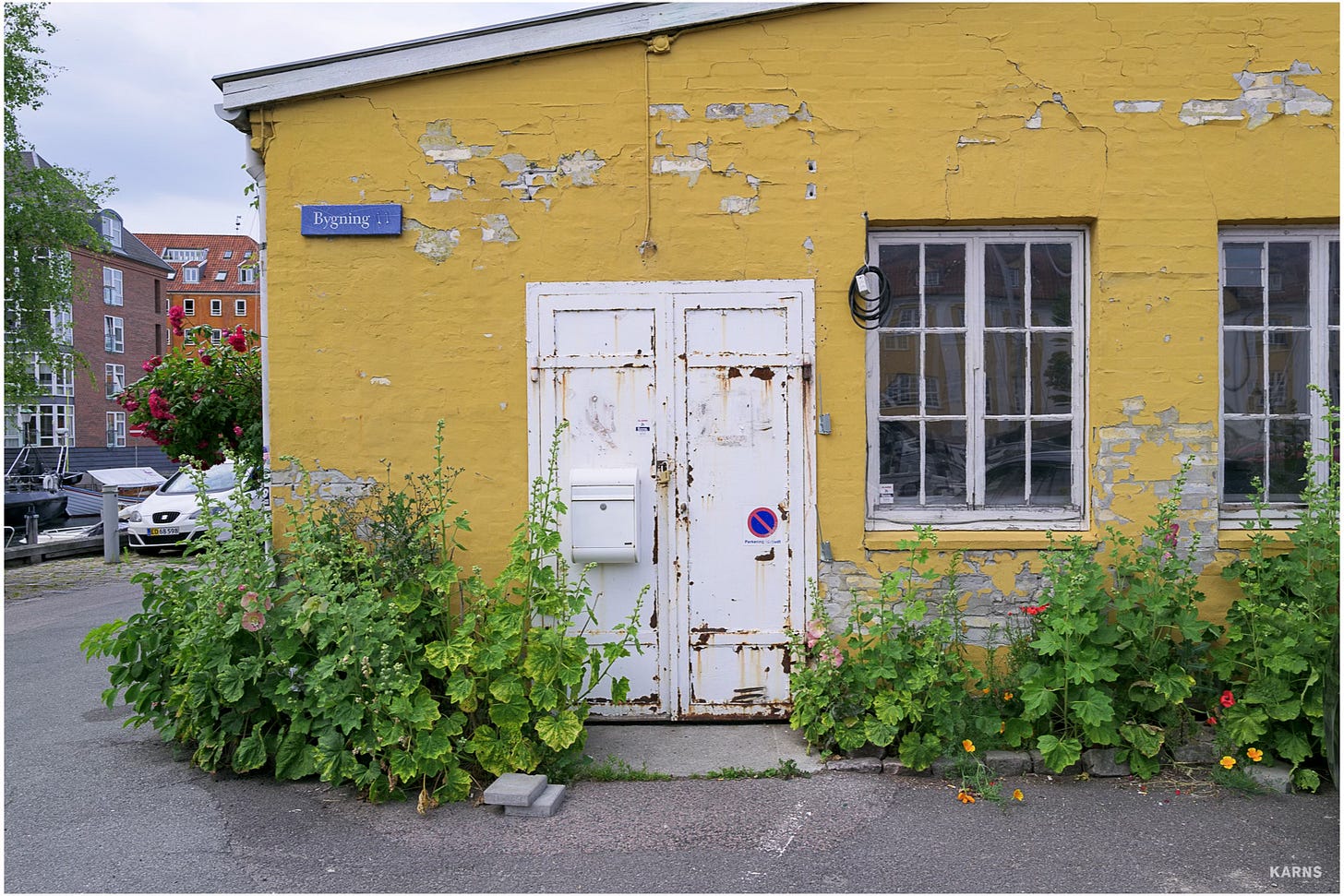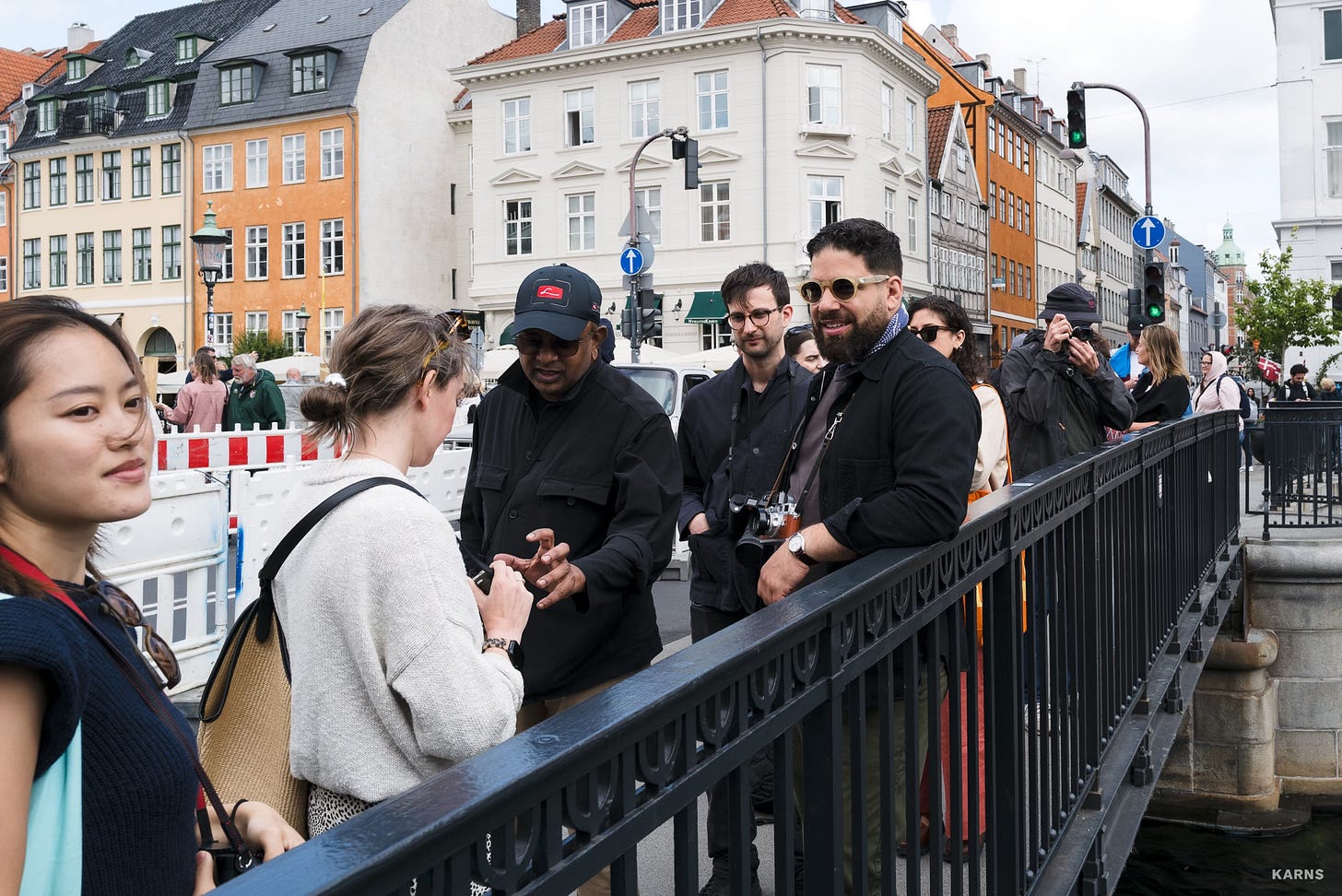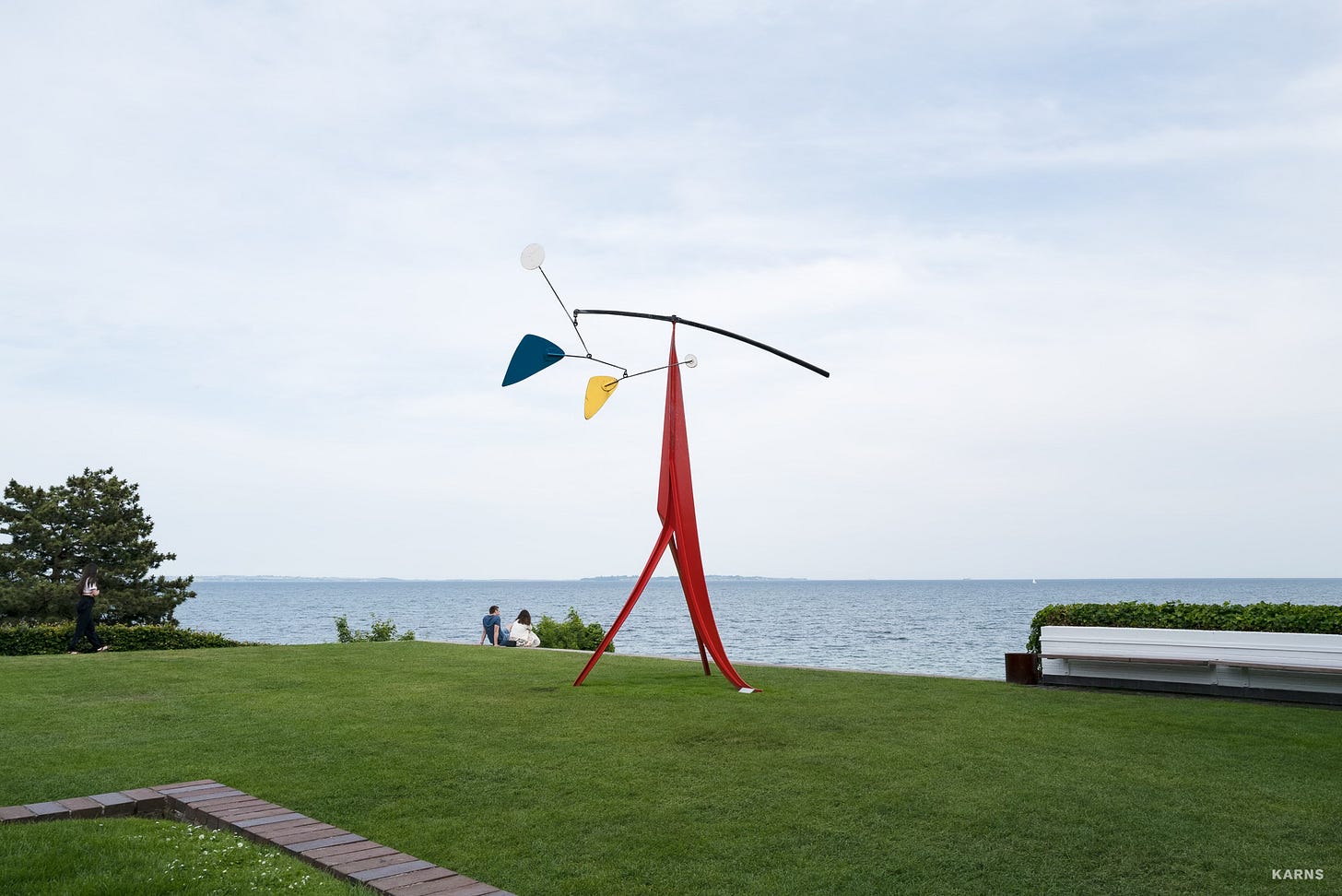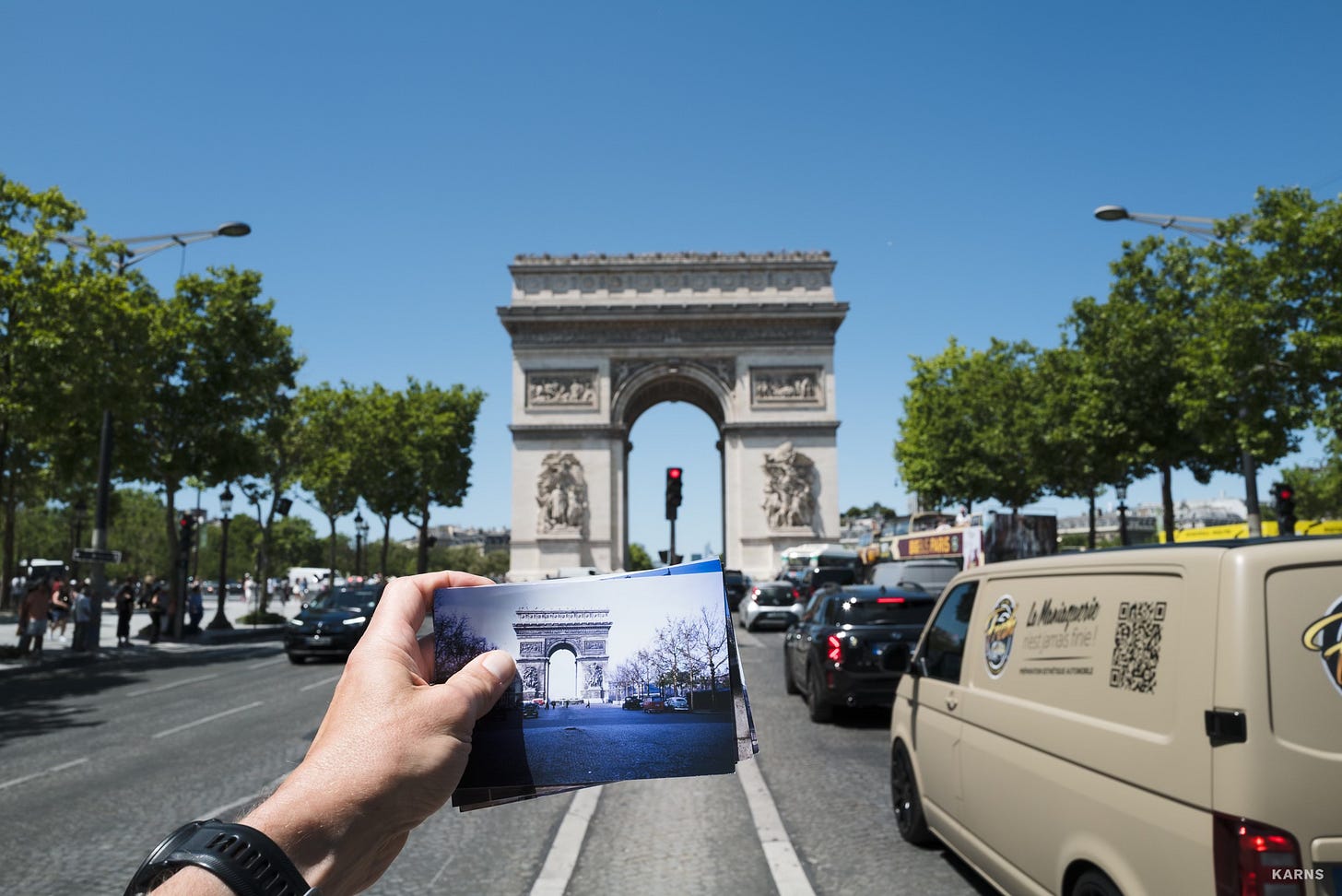Shifting Gears, Part 1
Part travelogue, part commentary, and part reflection, this extra long entry is the first part to closing off this chapter so I can launch a new one that I am very excited about.
Soul Journey
This gorgeous bit of Danish wabi-sabi faces the canal in Christianshavn, and around the corner is one of the best restaurants in the world. Then again, you can say that about at least dozens of similarly modest corners. I didn’t eat there, however, because I don’t have the kind of budget for dining out that a friend did and because it wasn’t that kind of trip.1
As I briefly mentioned at the end of my last post, I was headed there for 3 Days of Design, more work on the long-term project of reshooting my grandfather’s photos from the late 1940s and beyond, and some much-needed perspective. Oh, and to chase cortados and pastries.
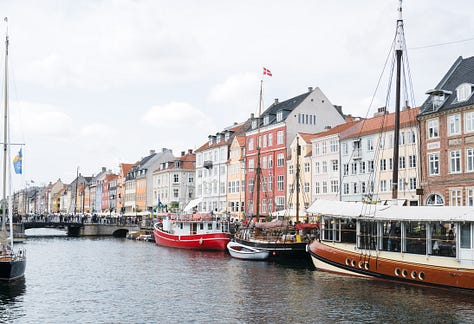
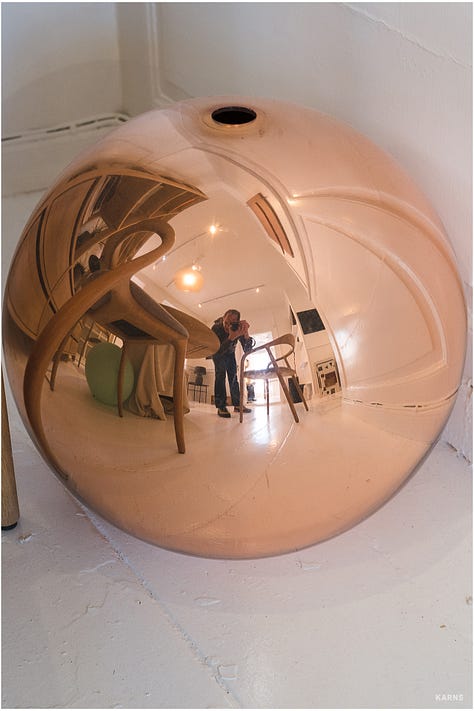
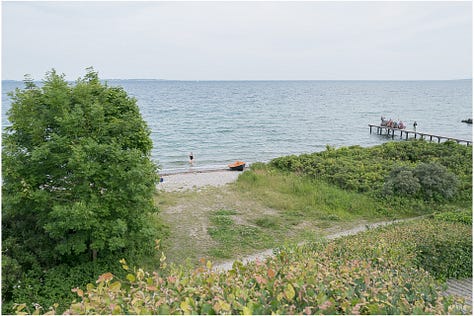



I got all of this and more, and in many ways, it was one of the best trips I’ve ever taken. Typically when I traveled in years past, I relied on bars to meet people (and very much felt the absence of that easy entrée into unfamiliar places in the fall), but the design festival and photo walks with the Leica Nordics crew gave an easy framework to get out of my bubble. Indeed, I didn’t have a down moment the entire time. Thanks to some local contacts and an American friend who was on her fourth extended stay, I got to know the city in ways I likely wouldn’t have otherwise. The few moments I got stuck in my own head were brief, and otherwise, I was almost always in the moment.
Anyone who’s gotten close enough to me probably knows how easily I fall into introspection and dwell on stupid shit. Instead, I was able to focus on what I was doing. Sometimes that meant thinking about what I was photographing and why, other times it meant savoring the food, and occasionally I just enjoyed sitting… which I rarely do.
Why So Serious?
There’s a reason — many, actually — why Copenhagen is considered one of the happiest places on Earth. It might be the light, which hits differently than anywhere I’ve spent time, or the fact that the system is generally designed to make people’s lives easier. It might be that the canals and harbor make for an amazing place to just chill the fuck out, even when the world is a shit show, and that no one cares if you’re topless, bottomless, or fully clothed because the body isn’t fetishized as a moral imperative. Or it might just be that the Danes don’t spend all of their time fighting constant stress.2
I don’t know exactly because my great-grandfather emigrated in 1906. I just know that within hours of landing there I was sitting on the harbor (not this image) and breathing in ways I hadn’t in weeks or months. My stress levels dropped radically as the rush of travel passed, and I felt no need to obsessively check social media or fill up on the latest news of the Trumpy Fascist Horror Show.
The second morning was, however, stressful because I was afraid of being late for my first photo walk, but then I was there. And talking to people. And exploring. And no one around me was anxious, tense, angry, hyper-reactive, or anything else that I expect from daily living in the States. In fact, when I did spill get a little frazzled, I was reminded that it was okay if things took a little longer. It’s not that serious here, I was told. The message was clear: stress isn’t good for you, so don’t let it drive you.
The idea was reinforced repeatedly over the week. With distance between my daily reality in the States, I had time to reflect on what was and wasn’t working in my life, including why I was struggling with this newsletter, and the conclusion I kept seeing was that focusing on trauma and stress was a self-feeding cycle. And I couldn’t escape the feeling that, as Americans, we’re often trained to mistrust others, fear differences, close our spaces, and dread the future, and we are rarely, if ever, just living in the present moment. It’s not a great way to live, and in our present climate, the differences become even more glaring when you spend time in a place that does encourage trust, connection, and being.
Community Matters
The sandwich was so amazing that I made a pilgrimage back to Studio x Kitchen just for it. Simple enough, it’s made with house-made pickles, organic cheese, aioli, and whatever vegetables are freshest. The ciabatta is from Juno, an internationally renowned bakery, who describe their ethos as built on generosity and “rooted in the deep meaning of traditions, with open eyes for the future and respect for the past.” They accomplish this by working closely with the farmers who produce the grain, butter, and other ingredients because that commitment to quality and organic connection matters.
Likewise, SxK’s aesthetic is as warm as the photo shows, and there are potters there who make the plates and dishes on which the food is served. To top it off, the staff are just really nice, and — all hyperbole aside — I had one of the most memorable lunches of my life there in October, not to mention some of the best kombucha I’ve ever had. And, you know what? They were just as nice on a crazy-busy Sunday in June, amidst a design festival, bike race, and general flurry of tourists.
To someone who doesn’t care about the connection between food, experience, and origin, this might seem pointless or even pretentious, but I think it’s a crucial example of how a commitment to community, and all that it means, matters. The food takes time to prepare because not everything is about rushing. The assumption is that you will sit, though they can certainly pack some things to go, and baking muffins and pastries in small batches through the day means that what you get is as fresh as possible. They note where customers are sitting on little post-its and bring food out because service is the norm, not something reserved for high-end places. And while there were certainly some people looking at their phones, reading and chatting are more common.
It isn’t just SxK, either. The vast majority of places I saw on both visits had that same come-in-order-chill vibe, like hygge in action. In America, this would be sold as a concept, a brand, and it would be packaged to-go, because even relaxation bows to our obsession with speed, convenience, and marketability. I’m tempted to chalk it up to the fact that we’re barely 250 years old as a country, while Denmark’s history as a country goes back to the 8th century. But it’s deeper than that.
Something fundamentally changes when you stop trying to get to the next place as quickly as possible, in both literal and metaphorical terms, and create space for people to live. I spent a good 20 minutes while I was waiting for a table at POPL Burger sitting on the plaza next to the canal, watching a father play with his toddler son. The toe-headed boy was bouncing around the table, laughing. The dad picked him up and tossed him in the air, and when he caught him, you could hear both of them laugh a block away. The boy caught me watching them and grinned, the dad smiled at me, and they continued their game.
The next afternoon, I was sitting at a Midsommar gathering at the Royal Danish Academy, and a family — mother, father, 13-month old — sat down across the table from me. They started chatting with me in Danish, and I chuckled and said I was American. No problem. They switched to English, and we chatted about kids and shared nonalcoholic beers until the dad’s sister and friend joined them. Before long, Tomas got tired, and both parents left to take him home, the dad returning eventually.
Can you ever imagine that kind of community, trust, or welcome in the States? It certainly wasn’t something I experienced much as a single dad after moving to Richmond in 2004. Most of the time, I struggled to balance work and child care with a challenging coparenting situation, and most kid-friendly activities and places were designed to fit stay-at-home mom schedules. Finding any kind of community was more of a struggle than it should have been. In fact, I’m not sure we’ve ever been a society that recognized community and connection might just be a better way to build a society than competition and consumption. Instead, we seem to fetishize stress, distrust happiness, and push a false image of the American Dream like another brand.
It’s not a great way to live, and the time in Copenhagen reminded me that I need to be better about maintaining connections within my own community, whether near or far.
Who’s That Guy?
The gentleman with the sunglasses and beard is Alex. Born in Paris, he grew up mostly in New York and Boston before returning to Europe as an adult. He’s been in Copenhagen ever since and works as a filmmaker, photographer, and Leica ambassador, running the Leica Akademie classes. Like Goran behind him, he’s a father to a young daughter, and we bonded over a slew of shared interests. He also represents many of the things I’d like to be at this phase of my life, but he’s not who I’m talking about here.
I spent a good bit of time with Alex over 3 Days of Design. From tips on where to eat to introductions to other photographers, he was a font of knowledge, all with a smooth elan and a vintage M3 around his neck. He didn’t take many photos, but that wasn’t his role in those hours. When I did see his work on a recent Audi campaign, for example, it was masterful. The shots were perfect and the creative direction distinctive, and while I tried my best not to compare my own work to his, the imposter poked through on mute a few times. Essentially, this was a guy who was living out some version of my fantasy future.
Something changed.
Before the trip, I’d traded a couple of my lenses to add a used Q2 to my kit since my main body, the SL2-S, is a wonderful-but-bulky camera that can be uncomfortable to carry around on an extended basis and which I’d found a little too big to a street camera. In addition, I’d recognized some bad habits I wanted to correct, and the Q with its fixed 28/1.7 lens and leaf shutter was both an amazing travel camera and one that slowed me down. Stripping away the question of multiple lenses and opting for a single mode of shooting simplified the whole process so I could focus on what and how I was shooting with fewer distractions.
It also helped get the imposter out of the equation. When I missed the chance to ask someone on the street for a photo, I recognized that it wasn’t a failing but a sign that I am much more comfortable grabbing candids than approaching random strangers. Just because people I respect naturally have that instinct doesn’t mean that I have to be comfortable doing it. Likewise, I don’t have to be the kind of street photographer who gets killer shots right up in people’s faces if I prefer a more observational style. And if I’m not the kind of photographer who likes to seek out models, maybe that’s not what I need to be doing. Ultimately, I realized through various conversations and observations that if I’m not interested in doing the bread-and-butter work it takes to build a photography business, maybe that’s not where I should focus myself.
This became particularly clear when I spent a couple days kicking around Copenhagen and the Louisiana Museum of Art with E, the American friend I’d met on the walks. She doesn’t consider herself a photographer, but she has a clear vision of the subjects she likes to photograph and a clear style. It’s a clarity I struggle with because I’m such an omnivore that I always want to do everything. As I hinted above, though, that instinct might not be serving me the way it should.
That feeling came slamming home when we were sitting at SxK before heading to Louisiana and she asked me, “What’s your zone? I’m usually at 5-6.” It took a moment before I realized she meant zone focusing, which made sense since she almost always shoots with a rangefinder. I said that I too usually shot at that aperture, and the conversation shifted to an issue she’d been chatting with Alex about a couple days earlier — frame lines that didn’t reach infinity. Swallowing a bit of ego, I admitted I didn’t know what that meant.
She handed over her beautiful M11-P Safari for me to try, a camera and lens so far out of my price range I’d never even bothered to hold one. The experience was immediately different from my SL2-S and Q2, both of which are in a different class altogether. As I tested it, noticing how the frame lines move to show focus and feeling the pure craftsmanship, I was humbled, though not because it was an amazing camera I couldn’t afford. Instead, it hit me that I was trying too hard, and there was still so much I needed to understand better.
We’d spent time together over the past few days from the photo walk to design events to a trek through various areas of the city. Romantic pretense ended pretty quickly when it was clear that neither of us were looking for an overseas hookup, so the time was more about exploring without the pressure of performance hanging over everything. She described her approach to photography as looking for symmetry and pretty pictures, and her work was indeed beautiful. Quiet and balanced, it was essentially the polar opposite of my hip-shot street photos, portraits where I tried to capture people in a moment, and even the cityscapes where I looked for the corners of the frame and unusual light. And as we discussed the art and approached photos, it occurred to me that slowing down and looking were still a work-in-progress for me and fundamental to the techniques I was working on correcting.
Fundamentally, there was still something missing from my work, and I was beginning to realize that the elusive dream I was chasing was a hell of a lot less defined than it needed to be. I also realized that perhaps the definition I was chasing and my best work were in a different direction.
To be continued…
Stay tuned next week for the second part of Copenhagen, a brief stop through Paris, and details on how this change in direction is leading to a new Substack.
A note here for people who might wonder why I’d hop the Atlantic for a seemingly extravagant excursion instead of spending the week in New York or other places where I have friends who I need (and want) to see: Ultimately, it came down to cost. I had credits with Delta that needed to be used (long story), so the travel itself was already covered, and after running the numbers, a week in New York would literally have cost me more than a week in Paris, let alone Copenhagen. My modest hotel with breakfast cost half of comparable spots in NYC, restaurant prices are on par or less, groceries are actually less expensive, and the stressful pace in NYC takes a toll on me after a few days.
Yes, I know that this comes with trade-offs and that Danish society has some deep-set issues. I also know that some of this is driven by a strict immigration system that often supports conservative thread possibly characterized by a quiet racism.




